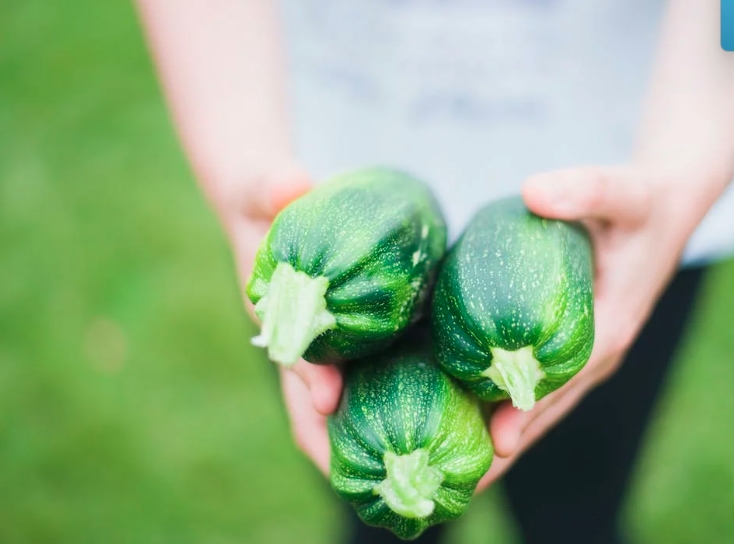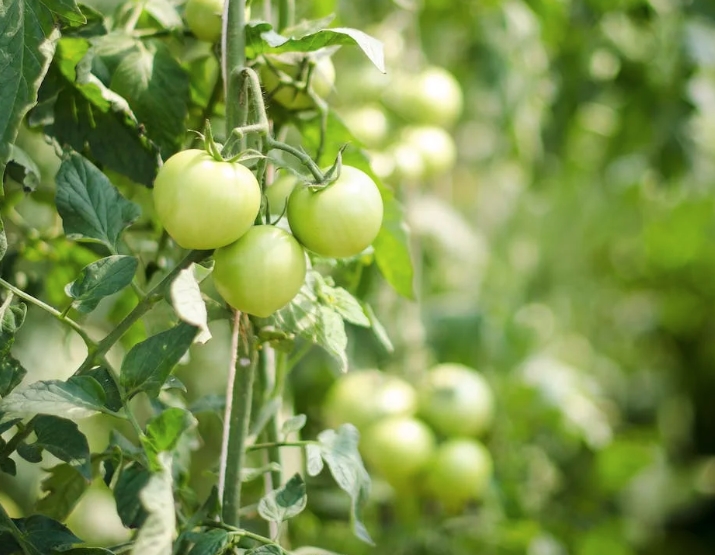Growing your own vegetables is an incredibly rewarding experience. Not only is it a great way to get in some outdoor activity and enjoy some quality time with nature, but it also allows you to access fresh, nutritious produce right from your own back yard. There are many benefits to growing your own vegetables, such as knowing exactly what’s in your food, having the ability to customize your garden to suit your family’s needs, and, of course, saving money on grocery bills. The purpose of this article is to provide tips and advice on how to get started with your own vegetable garden.
Starting a vegetable garden does not have to be difficult or overwhelming. With the right information and a bit of effort, anyone can become a successful vegetable gardener. The process begins with deciding what kind of garden you want to create, such as a raised bed, container, or traditional in-ground garden. Once you’ve determined what type of garden you’d like to create, you can then select the vegetables you’d like to grow, such as tomatoes, peppers, squash, beans, and more. You’ll also need to choose a location for your garden, select the right soil and fertilizer, and create a watering and maintenance schedule. With these steps completed, you’ll be ready to start sowing your seeds and harvesting your own fresh vegetables in no time!

Choosing a Location
Importance of Choosing the Right Location
Choosing the right location is an important decision for any business. The location of a business can determine its success or failure. It is important to select a location that is convenient for customers, has the necessary infrastructure and resources, and is within the budget. The right location can also help to attract more customers and increase sales.
Factors to Consider When Choosing a Location
When choosing a location for a business, there are several factors to consider. These include access to customers, access to resources and personnel, the cost of the location, and the potential for growth. Access to customers is important to ensure the business can reach its target market. The access to resources and personnel is important to ensure the business has the necessary support. The cost of the location should be within the budget of the business. Finally, the potential for growth should also be taken into consideration as the business expands.
Tips for Preparing the Site
When preparing the site for a business, there are several tips to follow. First, it is important to research the area and make sure it is suitable for the business. This includes researching any zoning laws or regulations that may apply. Second, it is important to inspect the site for any potential safety or health hazards. Third, it is important to create a detailed plan for the setup and operation of the business. Finally, it is important to ensure the business meets all the necessary regulatory requirements.
Selecting Vegetables
Types of Vegetables Suitable for Beginner Gardeners
When it comes to gardening, even the most experienced of gardeners can face challenges. For beginners, it can be intimidating to start a garden. To help you get started, there are some vegetables that are especially suitable for beginner gardeners. These include tomatoes, beans, squash, cucumbers, and peppers. Tomatoes and beans are easy to grow and can provide a lot of food for the beginner gardener. Squash and cucumbers are easy to grow, and can provide a steady supply of vegetables throughout the summer. Peppers are easy to grow and can provide a tasty and colorful addition to any meal.
Factors to Consider When Selecting Vegetables
When it comes to selecting vegetables for your garden, there are several factors to consider. First, you should think about the climate and soil in your location. Different vegetables require different soil types and climates to thrive. If you live in a warm climate, you may have better luck with warm-weather crops like tomatoes and peppers. If you live in a cooler climate, you may have better luck with cool-weather crops like kale and spinach. You should also consider the amount of sunlight your garden will receive. Some vegetables need full sun, while others need partial sun or shade.
Tips for Choosing Vegetables That Will Thrive in Your Location
When choosing vegetables for your garden, it is important to choose varieties that are well-suited to your location. If you live in a warm climate, opt for heat-tolerant varieties such as cherry tomatoes and long-season peppers. If you live in a cooler climate, opt for cold-tolerant varieties such as kale and broccoli. You should also consider the amount of space you have available. Some vegetables, such as tomatoes and squash, require a lot of space, while others, such as lettuce and spinach, can be grown in smaller spaces. Finally, consider the amount of time you have available for gardening. Some vegetables, such as beans, require a lot of maintenance and attention, while others, such as carrots and potatoes, require less care. By taking the time to research and choose the right vegetables for your location, you can ensure that you have a successful and enjoyable gardening experience.
Preparing the Soil
Soil preparation is an essential part of gardening and landscaping, as it can significantly influence the success of any planting project. The quality and type of soil can determine the health and productivity of the plants, as well as the overall appearance of the garden and landscape. Proper soil preparation can help ensure the success of any planting project and can save time and money in the long run.
There are several methods for improving the quality of soil, including adding organic matter and fertilizers. Adding organic matter to the soil can help to improve the structure, aeration, and drainage of the soil. Organic matter can come in the form of compost, peat moss, or animal manure. Adding fertilizers can also help to improve the quality of soil by providing essential nutrients to the plants. Fertilizers can come in liquid, granular, or powdered form and should be used according to the specific needs of the plants.
When adding organic matter and fertilizers to the soil, there are some key tips to keep in mind. First, it is important to check the pH levels of the soil before adding anything to it. This can help to ensure that the soil is not too acidic or alkaline, which can interfere with the plants’ ability to absorb the nutrients. Secondly, it is important to use the right type and amount of organic matter and fertilizer for the plants being grown. Too much of these substances can lead to over-fertilization, which can cause damage to the plants and the environment. Finally, it is important to water the soil after adding organic matter and fertilizer, as this can help the nutrients to be absorbed by the plants.
Soil preparation is an important part of any gardening or landscaping project, as it can help to ensure the success of the project and save time and money in the long run. Adding organic matter and fertilizers to the soil can help to improve its quality and provide essential nutrients to the plants. By following the tips outlined above, gardeners and landscapers can ensure that their soil is properly prepared and that their plants are getting the nutrients they need.
Planting Your Garden
Planting a garden is a rewarding experience that can provide you with the freshest and most delicious vegetables. To ensure that your garden is a success, there are a few important steps to follow.
Tips for Planting Seedlings and Seeds: Planting seedlings and seeds is the first step in establishing your garden. When planting seedlings, it is important to gently spread the roots apart and place them in a hole that is wide enough to accommodate them. Make sure to fill the hole with soil, pressing it firmly around the roots. When planting seeds, you will need to prepare the soil by removing rocks and weeds and loosening the ground to a depth of a few inches. Place the seeds in the soil and cover them with a thin layer of soil.
Spacing and Depth Requirements for Different Types of Vegetables: Planting your vegetables correctly is essential to ensure that they have enough space to grow. Different types of vegetables will require different spacing and depths. For example, carrots should be planted 2-3 inches apart with a depth of 1-2 inches, while tomatoes should be planted 12-18 inches apart with a depth of 2-3 inches.
Methods for Protecting Plants from Pests and Diseases: After planting your garden, it is important to protect the plants from pests and diseases. To do this, you should practice good sanitation, removing weeds and debris that can attract pests. Additionally, you should use mulch and organic fertilizers to keep the soil healthy and to provide a protective barrier against pests and diseases. You can also use natural insect repellents, such as garlic and neem oil, to keep pests away.
By following these tips, you can create a successful and thriving garden. Planting your garden can be an enjoyable and rewarding experience, so make sure to follow these guidelines to ensure that your plants will thrive.
Caring for Your Garden
Watering and Fertilizing: Proper watering and fertilizing are key to a successful garden. Knowing when and how to water and fertilize your plants is essential to their growth and health. The amount of water a plant needs depends on the type of plant, the climate, and the season. When watering, it’s important to use the right amount of water, as too much or too little can be damaging. Similarly, fertilizing should be done at the right time and with the right amount. It’s also important to use the right type of fertilizer, as different types are better for different plants.
Pruning and Harvesting: Pruning and harvesting vegetables and other plants is an important part of caring for your garden. Pruning helps to keep plants healthy and in shape, as well as to remove diseased or damaged parts of the plant. It’s important to prune at the right time and in the right way, as incorrect pruning can cause damage to the plant. Harvesting vegetables at the right time is also important, as it helps to ensure the best flavor and quality.
Preventing and Managing Common Garden Problems: Common garden problems can be a nuisance, but luckily there are techniques for preventing and managing them. One of the best strategies for preventing common garden problems is to properly care for your plants, as healthy plants are less susceptible to pests and diseases. There are also many techniques for managing common garden problems, such as using traps, traps, and special sprays and powders. It’s important to use the right techniques for the right problem, as some techniques are more effective for certain problems than others.

Harvesting and Preserving Your Vegetables
Harvesting vegetables at the right time is important for getting the best flavor and nutrition from them. Knowing when to pick your vegetables can be tricky, so it helps to know the optimal time for each type of vegetable. For example, tomatoes should be picked when they are full red or orange, while potatoes should be harvested when the leaves start to yellow. Properly harvesting and storing vegetables can also ensure that they last longer and retain their flavor.
When it comes to storing and preserving vegetables, there are a few different options. Refrigeration is one of the most popular methods, as it can help vegetables last longer and retain their freshness. Freezing is also a great way to preserve vegetables, as it can help lock in their flavor and nutrients. Other methods include pickling, drying, and canning.
In addition to simply storing and preserving vegetables, there are also lots of creative ways to use and share your garden harvest. Consider making homemade jams and jellies, dehydrating vegetables for snacks, freezing them for later use, or even canning them for long-term storage. You can also share your garden produce with family and friends, or donate to food banks and shelters.
Conclusion
Growing your own vegetables can be a rewarding and enjoyable experience. Not only will it provide you with fresh, nutrient-dense produce, but it will also allow you to connect with nature and the environment in a meaningful way. Starting a vegetable garden doesn’t have to be difficult. With the right knowledge, tools, and tips, anyone can become a successful and experienced gardener.
Start by researching the vegetables that you’d like to grow and the best growing conditions for them. Figure out the size of garden you want to create, and make sure you have the right tools and materials to get the job done. Create a plan for how and where you’ll plant your crops, and make sure they’ll get the proper soil, water, and sunlight. Finally, make sure to keep your garden weed-free and clean up any debris or pests that may be present.
By following these tips, you’ll be well on your way to growing a successful and healthy vegetable garden. Not only will you be providing yourself with fresh produce, but you’ll also gain a better understanding of nature and the environment. Gardening can be a wonderful activity that can bring you joy, peace, and satisfaction—so get planting and enjoy the fruits of your labor!
FAQs
1. What is the best soil for a vegetable garden?
For a vegetable garden, it is best to use a soil that is rich in organic matter, such as compost or aged manure. Make sure to mix the soil with sand or vermiculite to improve drainage and aeration.
2. How much space do I need for a vegetable garden?
The amount of space you need for a vegetable garden depends on the type of vegetables you plan to grow. Larger vegetables such as squash, pumpkins, and corn require more space, while smaller vegetables such as carrots and radishes require less.
3. When is the best time to start a vegetable garden?
The best time to start a vegetable garden depends on the climate and region you live in. Generally speaking, the best time to start a vegetable garden is in the spring, when the soil is warm and the days are becoming longer.
4. What are the best vegetables to grow in a garden?
The best vegetables to grow in a garden depend on your climate, soil type, and personal preferences. Some popular vegetables to grow in a garden include tomatoes, peppers, cucumbers, squash, beans, carrots, and radishes.
5. How much water does a vegetable garden need?
Vegetable gardens need about an inch of water per week, either from rain or from supplemental irrigation. Make sure to water the soil deeply and evenly for best results.
6. How often should I fertilize my vegetable garden?
The frequency of fertilizing your vegetable garden depends on the type of fertilizer you are using. Generally speaking, organic fertilizers should be applied at least once a month, while synthetic fertilizers should be applied every two weeks.
7. What are the benefits of growing a vegetable garden?
Growing a vegetable garden has many benefits. It can provide a source of fresh, healthy food, help reduce grocery costs, and provide a sense of satisfaction from growing your own food.
8. How do I control pests in my vegetable garden?
The best way to control pests in your vegetable garden is to practice integrated pest management (IPM). This involves using a combination of physical, cultural, and chemical methods to keep pests under control.
9.What is the best way to start a vegetable garden?
The best way to start a vegetable garden is to first plan out the size, location, and design of the garden. Then, prepare the soil by adding compost and other organic matter, and test the soil for nutrients. Finally, choose the vegetables you want to grow and plant them accordingly.
10. What should I do if my vegetable garden is not producing?
If your vegetable garden is not producing, there are a few things you can try. Make sure the soil is well drained and fertilized, and make sure the plants are getting enough sunlight and water. You may also need to adjust your planting schedule or choose different varieties of plants.


















